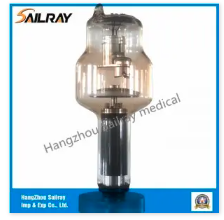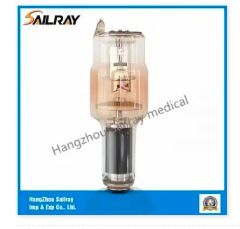Rotating anode X-ray tubes are an important part of the field of X-ray radiography. These tubes are designed to generate high energy X-rays for medical and industrial applications. Proper assembly and maintenance of these tubes is critical to ensuring their longevity and safe operation. In this article, we discuss important safety guidelines to consider when assembling and maintaining rotating anode X-ray tubes.
Only qualified specialists with knowledge of X-ray tubes should assemble, maintain and disassemble the tubes
Rotating anode X-ray tubes are complex devices that require specialized knowledge to operate safely. Only qualified specialists with knowledge of X-ray tubes should assemble, maintain and disassemble the tubes. The specialist should have extensive experience in handling X-ray tubes and should be familiar with the specific model of rotating anode X-ray tube being used. They should be trained to follow detailed instructions and protocols when performing maintenance or repairs to keep the equipment functioning properly.
When installing the sleeve insert, take care to avoid broken glass bulbs and jets of debris
During the assembly of a rotating anode X-ray tube, special attention should be paid to the installation of the tube insert. Proper care must be taken to avoid breakage of the glass bulb and ejection of debris. Use of protective gloves and glasses is recommended when handling tube inserts. This safety measure is especially important because tube inserts can be fragile and prone to breakage, which can cause glass shards to fly out at high velocity, which can be a significant safety hazard.
Insertion tubes connected to high voltage power sources are sources of radiation: be sure to take all necessary safety precautions
Pipe inserts connected to high voltage or HV power supplies are sources of radiation. All necessary safety precautions must be taken to avoid radiation exposure. Specialists handling the tube should be familiar with radiation safety protocols and should ensure that the tube insert and surrounding area are adequately shielded during operation.
Thoroughly clean the outer surface of the tube insert with alcohol (caution fire risk): avoid contact of dirty surfaces with the cleaned tube insert
After handling the tube, the outer surface of the tube insert must be cleaned with alcohol. This step is necessary to ensure that any dirt or contaminants present on the surface are removed, avoiding any potential fire risk. After cleaning the tube inserts, it is critical to avoid touching dirty surfaces and to handle the tube inserts using clean sterile gloves.
Clamping systems within enclosures or stand-alone units shall not exert mechanical stress on the tubes
During the assembly of rotating anode X-ray tubes, it must be ensured that no mechanical stress is exerted on the tube by the clamping system within the housing or in the stand-alone unit. Stress on the tube can cause damage, which can lead to failure or failure. To ensure that the tube is free from mechanical stress during assembly, it is imperative to follow the manufacturer's guidelines and take the necessary precautions to ensure proper placement of the tube.
After installation, check whether the pipe works normally (the pipe current has no fluctuation, no popping sound)
After installing a rotating anode x-ray tube, it is necessary to test and ensure that the tube is working properly. The technician should test for fluctuations or crackles in the tube current during operation. These indicators can predict potential problems with the tube. If such a phenomenon occurs during the testing process, the technician should notify the manufacturer in time, and continue to use it after solving the problem.
In summary, rotating anode X-ray tubes are an important part of radiography. Assembly and maintenance of these tubes requires expertise and training. Proper safety protocols should be followed during tube handling and assembly to ensure the safety of technicians and patients as well as the longevity of the equipment. It is critical to follow the manufacturer's guidelines and test the plumbing for proper functioning after installation. By adopting these safety guidelines, technicians can optimize the useful life of rotating anode X-ray tubes while ensuring safe and efficient operation.
Post time: Jun-01-2023



